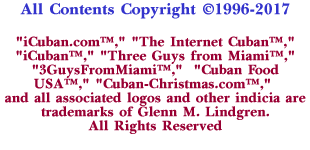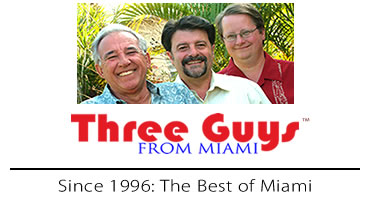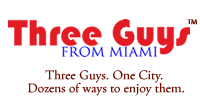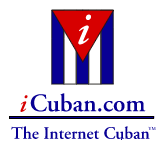Little Havana/Calle Ocho Travel Guide
Little Havana: Culture
Just when people began giving up on Calle Ocho (for a time, even die-hard Cubans rarely came here from their more suburban neighborhood homes) things started to change. By the 1990s, new waves of Latin American immigrants began settling in the area. Recent arrivals from Honduras, El Salvador, and Nicaragua started their own small shops and restaurants.
A long-time open-air Cuban cafeteria on the corner of 14th and Calle Ocho turned into a gaily-decorated Nicaraguan place seemingly overnight.
At the same time Calle Ocho was becoming multicultural, Cuban and Latin artists, initially attracted by cheap rent and a thriving Latin vibe, opened a dozen galleries and studios to display their talents. The art deco Tower Theater, with its 40-foot steel tower, became a cultural center with special events and exhibits. A burgeoning interest in Cuban cigars drew visitors to Calle Ocho cigar factories and soon mini tour buses were disgorging groups of camera-toting tourists up and down 8th Street.

Calle Ocho, the main street of Little Havana is a true melting pot of Latin culture.
For almost 30 years, Calle Ocho or 8th Street, the main thoroughfare of Little Havana was vibrant and alive with the sights and sounds of Cuban culture. There were restaurants, small shops, Cuban food stores, and fruit markets. In the beginning, when everyone was poor, an outing consisted of a stroll down Calle Ocho to take in the night air followed by a pastry and a bottle Materva or Malta from La Gran Via Bakery. Calle Ocho was always crowded at night with people sitting on bus benches and conversing or standing around the “ventanitas” (coffee windows) or in the makeshift Domino Park, then just a vacant lot.
Cubans who lived nearby shopped in small neighborhood bodegas much as they did in Cuba. On a typical Saturday, the sounds of Cuban music filled the street and the sidewalks buzzed with energy and activity. The great commercial thoroughfare of Calle Ocho was a magnet that drew Cubans from all over Miami. The street's specialty stores, restaurants, and clubs were major draws as was the Tower Theater, which presented American Movies with Spanish subtitles.
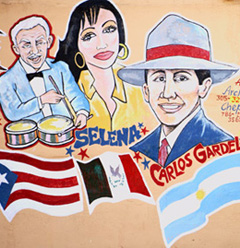
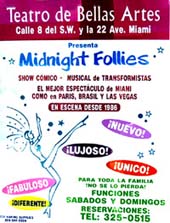
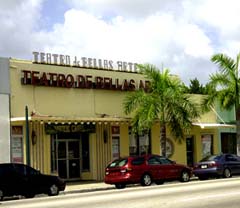
Raúl Musibay: We can only recommend this for people who are fluent in Spanish because all of the plays are written by and performed by Cuban actors.
Jorge Castillo: It even helps to be Cuban to understand a lot of the humor!
Raúl Musibay: They present eight or nine different productions each year.
Glenn Lindgren: Those not fluent in Spanish may still enjoy the Midnight musical follies and the female impersonator acts -- if that's the kind of thing you like...
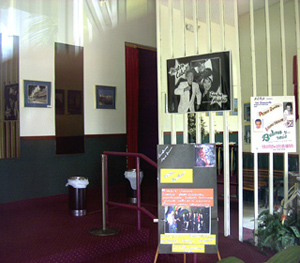
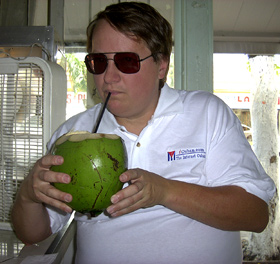

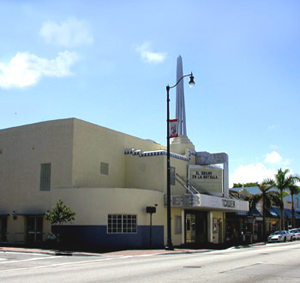
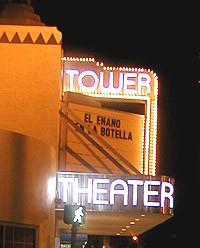
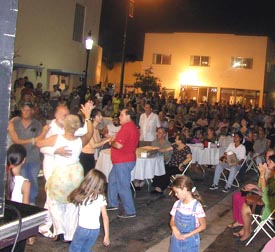
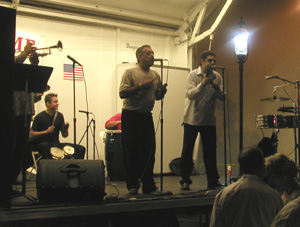

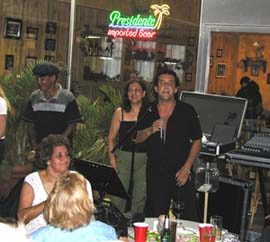
Glenn Lindgren: Although Cultural Fridays are sill confined to that "magic" area between 14th and 18th – this will change with time – merchants from all over Little Havana do have an opportunity to set up shop along the sidewalk.
Jorge Castillo: Cultural Friday is THE BEST WAY to experience Calle Ocho and Little Havana. It is a safe and fun evening event that is suitable for the whole family.
Raúl Musibay: You never know what to expect. The music is very good. There are usually several bands playing, most noticeably next to Domino Park, where they block off the street, set up chairs, and erect a portable stage.
Jorge Castillo: Both local and nationally known Latin artists have been known to appear here. Be sure to get there early if you want to grab a seat.
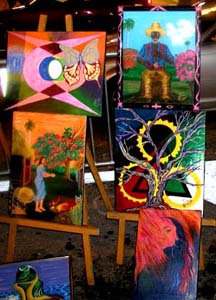
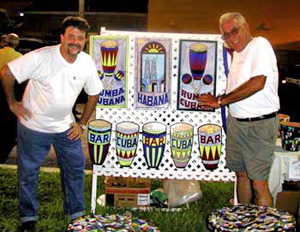
Cultural Fridays in Little Havana
Continued on Next Page
There's More! Read On:
Calle Ocho | Calle Ocho Culture | Calle Ocho Restaurants
Calle Ocho Shopping | Calle Ocho Artists | Calle Ocho Sights
This new Kindle version contains all of the recipes and editorial copy from the original print edition. As a bonus, the new Kindle edition includes more than 24 new photos of the prepared dishes.
MORE THAN 30,000 PRINT COPIES SOLD
"Three Guys From Miami Cook Cuban"
NOW AVAILABLE AS A KINDLE EBOOK!
Three Guys From Miami Show You How to Make the Best Cuban, Spanish, and Latin American Food!
CHECK OUT THE RECIPES:
Drinks | Appetizers | Salads | Main Dishes
Soups | Side Dishes | Desserts | Index
Visit All of Our Sites:
Three Guys From Miami:
Cuban, Spanish, and Latin American food recipes, Miami/Little Havana Travel Guide, Miami Restaurant Guide, Hispanic Culture & Food
The Three Guys From Miami are: Raúl Musibay, Glenn Lindgren, and Jorge Castillo
Check out The Three Guys From Miami's Google+ Fan Page
